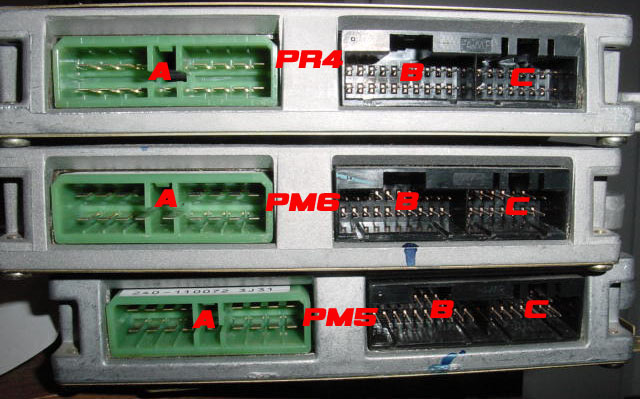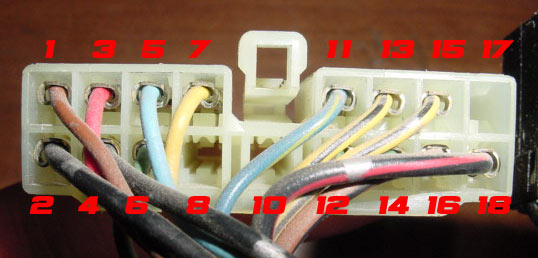

| ECU | From | Comments |
| Non-VTEC | Most of these can be used on any B18A, B20, or D16/D15, non-VTEC, OBD0 MPFI application. | |
| PM5/PM9 | DPFI ECU from 88-91 civics/crxs | These suck and aren't good for anything but parts. The 90-91 ECU's are chippable but I don't think anyone has spent any time with them so the programs aren't all that well known. |
| PM6 | 88-91 crx/civic Si's and 90-91 EX 5speed sedans | All US versions are 5 speed ECU's. Every once in a while I come across a JDM one, and some of those are from autos (which work for 1 wire vtec). Only the 90-91 PM6's have an external EPROM so they are easily chippable. The 88-89 version are chippable but only with a lot of trouble. 90-91 PM6's are cheap (~$40), fairly easy to come by and very versatile for anything OBD0. How to identify a 90-91 PM6. |
| PS9 | 90-91 auto EX sedans | Just an auto PM6. Good for 1 wire vtec. |
| PR4 | 90-91 Integras | These come in auto and manual versions. The 5 speed versions go for around $50 or $60 and typically the auto versions are much cheaper (I got one for free a little while ago). The auto ecus are a good option because they are easily converted to manual usage. |
| PM7 | 88-91 JDM ZC | I don't know much about them. They are similar to a PM6 but have very different programs. I have never had one in my possession. |
| VTEC | The only things these share with their non-VTEC counterparts is the plugs. They are actually more like an OBD1 ECU than they are like an OBD0 non-VTEC ECU. They can be used in a few applications like (obviously) on a B16 and even on SOHC VTEC swaps like the D16Z6 or Y8. There are a few problems using a PR3 or PW0 on D16s. One problem is the 2nd O2 sensor. You will either have to add another oxygen sensor to your header or get the ECU chipped with a rom that disables BOTH O2 sensors. The other prob is that PR3's and PW0's use a knock sensor and the D16s do not, so you will have to get a chip with the knock sensor also removed. | |
| PR3 | 89-91 integra XS-I's and RS-I's | Come with 1st gen B16a swaps. They typically go for around $150. |
| PW0 | Most from 88-92 civic/crx SiR's | Made for B16s just like the PR3. These are a lot like the PR3's. |
| Chip | Comments |
| 27C256�� | Your average rom chip. They are the cheapest and most are one time programmable (OTP) which means you can only program them once. They also come in a UV erasable version which are identified by a clear window on the top of the chip. They can be reprogrammed more than once but need to be erased first by way of, you guessed it, UV light. It takes a really long time by sunlight so people typically make their own erasers. |
| 27C512�� | These chips are double the capacity of the 27C256's. That means they can hold up to 2 programs which can be switched between if you install a switch in the right fashion. If there is no switch then the ECU will run on the higher of the 2 banks (so the last 32k of the file, or the 2nd program to be put on). |
| 28C256�� | These are electronically erasable but a lot of people have problems using them in ECU's so I try to stay away from them. |
| 29C256�� | These are flash chips. They are IMO the best chips to use in our ECU applications. They are easily over written by your burning software which makes them versatile and very easy to use. They are usually around $5 a chip. |